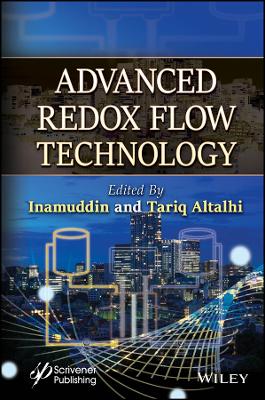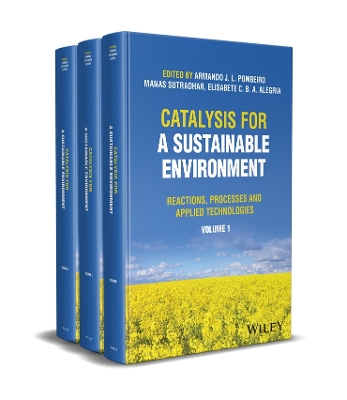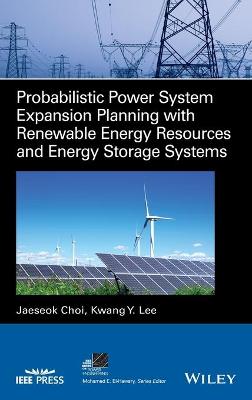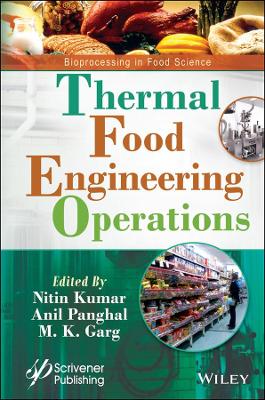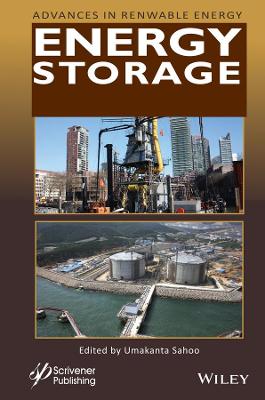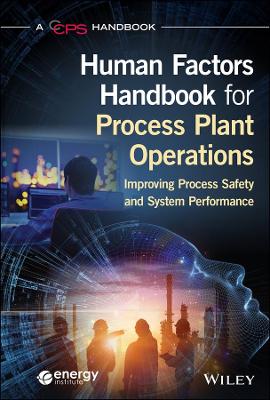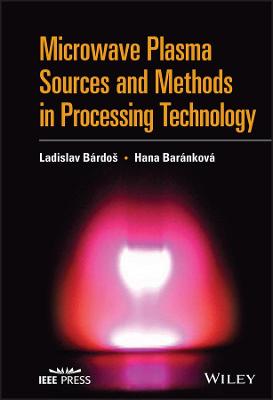Energy Storage
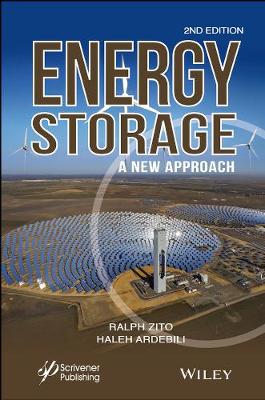 -15%
portes grátis
-15%
portes grátis
Energy Storage
A New Approach
Zito, Ralph; Ardebili, Haleh
John Wiley & Sons Inc
11/2019
366
Dura
Inglês
9781119083597
15 a 20 dias
684
Acknowledgements to First Edition xv
Acknowledgements to Second Edition xvi
1 Introduction 1
1.1 The Energy Problem 1
1.1.1 Increasing Population and Energy Consumption 2
1.1.2 The Greenhouse Effect 3
1.1.3 Energy Portability 4
1.2 The Purposes of Energy Storage 5
1.3 Types of Energy Storage 6
1.4 Sources of Energy 10
1.5 Overview of this Book 12
2 Fundamentals of Energy 15
2.1 Classical Mechanics and Mechanical Energy 15
2.1.1 The Concept of Energy 15
2.1.2 Kinetic Energy 19
2.1.3 Gravitational Potential Energy 26
2.1.4 Elastic Potential Energy 27
2.2 Electrical Energy 28
2.3 Chemical Energy 31
2.3.1 Nucleosynthesis and the Origin of Elements 31
2.3.2 Breaking and Forming the Chemical Bonds 35
2.3.3 Chemical vs. Electrochemical Reactions 36
2.3.4 Hydrogen 37
2.4 Thermal Energy 39
2.4.1 Temperature 39
2.4.2 Thermal Energy Storage Types 40
2.4.3 Phase Change Materials 42
3 Conversion and Storage 43
3.1 Availability of Solar Energy 46
3.2 Conversion Processes 48
3.2.1 Photovoltaic Conversion Process 49
3.2.2 Thermoelectric Effects: Seebeck and Peltier 49
3.2.3 Multiple P-N Cell Structure Shown with Heat 50
3.2.4 Early Examples of Thermoelectric Generators 50
3.2.5 Thermionic Converter 51
3.2.6 Thermogalvanic Conversion 51
3.3 Storage Processes? 54
3.3.1 Redox Full-Flow Electrolyte Systems 54
3.3.2 Full Flow and Static Electrolyte System Comparisons 55
4 Practical Purposes of Energy Storage 59
4.1 The Need for Storage 59
4.2 The Need for Secondary Energy Systems 62
4.2.1 Comparisons and Background Information 63
4.3 Sizing Power Requirements of Familiar Activities 64
4.3.1 Examples of Directly Available Human Manual Power Mechanically Unaided 66
4.3.1.1 Arm Throwing 66
4.3.1.2 Vehicle Propulsion by Human Powered Leg Muscles 66
4.3.1.3 Mechanical Storage: Archer's Bow and Arrow 67
4.4 On-the-Road Vehicles 69
4.4.1 Land Vehicle Propulsion Requirements Summary 69
4.5 Rocket Propulsion Energy Needs Comparison 70
5 Competing Storage Methods 71
5.1 Problems with Batteries 72
5.2 Hydrocarbon Fuel: Energy Density Data 75
5.3 Electrochemical Cells 77
5.4 Metal-Halogen and Half-Redox Couples 78
5.5 Full Redox Couples 83
5.6 Possible Applications 85
6 The Concentration Cell 89
6.1 Colligative Properties of Matter 89
6.2 Electrochemical Application of Colligative Properties 91
6.2.1 Compressed Gas 93
6.2.2 Osmosis 94
6.2.3 Electrostatic Capacitor 95
6.2.4 Concentration Cells: CIR (Common Ion Redox) 96
6.3 Further Discussions on Fundamental Issues 101
6.4 Adsorption and Diffusion Rate Balance 107
6.5 Storage by Adsorption and Solids Precipitation 109
6.6 Some Interesting Aspects of Concentration Cells 113
6.7 Concentration Cell Storage Mechanisms that Employ Sulfur 116
6.8 Species Balance 118
6.9 Electrode Surface Potentials 119
6.10 Further Examination of Concentration Ratios 120
6.11 Empirical Results with Small Laboratory Cells 122
6.12 Iron/Iron Concentration Cell Properties 126
6.13 The Mechanisms of Energy Storage Cells 127
6.14 Operational Models of Sulfide Based Cells 132
6.15 Storage Solely in Bulk Electrolyte 134
6.16 More on Storage of Reagents in Adsorbed State 137
6.17 Energy Density 140
6.18 Observations Regarding Electrical Behavior 141
6.19 Concluding Comments 143
6.20 Typical Performance Characteristics 145
6.21 Sulfide/Sulfur Half Cell Balance 145
6.22 General Cell Attributes 146
6.23 Electrolyte Information 146
6.24 Concentration Cell Mechanism and Associated Mathematics 149
6.25 Calculated Performance Data 150
6.26 Another S/S?2 Cell Balance Analysis Method 153
6.27 A Different Example of a Concentration Cell, Fe+2/ Fe+3 155
6.28 Performance Calculations Based on Nernst Potentials 156
6.28.1 Constant Current Discharge 157
6.28.2 Constant Power Discharge 158
6.29 Empirical Data 160
7 Thermodynamics of Concentration Cells 163
7.1 Thermodynamic Background 163
7.2 The CIR Cell 166
8 Polysulfide - Diffusion Analysis 175
8.1 Polarization Voltages and Thermodynamics 176
8.2 Diffusion and Transport Processes at the (?) Electrode Surface 177
8.3 Electrode Surface Properties, Holes, and Pores 179
8.4 Electric (Ionic) Current Density Estimates 183
8.5 Diffusion and Supply of Reagents 184
8.6 Cell Dynamics 186
8.6.1 Electrode Processes Analyses 186
8.6.2 Polymeric Number Change 186
8.7 Further Analysis of Electrode Behavior 198
8.7.1 Flat Electrode with Some Storage Properties 198
8.8 Assessing the Values of Reagent Concentrations 206
8.9 Solving the Differential Equations 207
8.10 Cell and Negative Electrode Performance Analysis 219
8.11 General Comments 225
9 Design Considerations 227
9.1 Examination of Diffusion and Reaction Rates and Cell Design 227
9.2 Electrodes 228
9.3 Physical Spacing in Cell Designs 229
9.3.1 Electrode Structures 229
9.4 Carbon-Polymer Composite Electrodes 233
9.4.1 Particle Shapes and Sizes 235
9.4.2 Metal to Carbon Resistance 235
9.4.3 Cell Spacing 236
9.5 Resistance Measurements in Test Cells 237
9.6 Electrolytes and Membranes 239
9.7 Energy and Power Density Compromises 240
9.8 Overcharging Effects on Cells 244
9.9 Imbalance Considerations 244
10 Electrolytes, Separators, and Membranes 245
10.1 Electrolyte Classifications 246
10.2 Ionic Conductivity 247
10.2.1 Measurement Techniques 247
10.2.2 Nyquist Plot Circuit Fitting 249
10.3 Ion Conduction Theory 251
10.3.1 Ion Conduction in Liquid Electrolytes 252
10.3.2 Ion Conduction in Polymer Electrolytes 256
10.3.3 Ion Conduction in Ceramic Electrolytes 260
10.4 Factors Affecting Ion Conductivity 262
10.5 Transference Number 263
10.6 Electrolytes for Lithium Ion Batteries 264
10.6.1 Liquid Electrolytes 264
10.6.1.1 Non-Aqueous Electrolytes 264
10.6.1.2 Aqueous Electrolytes 268
10.6.2 Solid and Quasi-Solid Electrolytes 270
10.6.2.1 Polymer Electrolytes 270
10.6.2.2 Ceramic Electrolytes 272
10.7 Electrolytes for Supercapacitors 272
10.8 Electrolytes for Fuel Cells 276
10.9 Fillers and Additives 282
11 Single Cell Empirical Data 283
11.1 Design and Construction of Cells and the Materials Employed 283
11.2 Experimental Data 287
12 Conclusions and Future Trends 289
12.1 Future of Energy Storage 289
12.2 Flexible and Stretchable Energy Storage Devices 290
12.3 Self-Charging Energy Storage Devices 294
12.4 Recovering Wasted Energy 295
12.5 Recycling Energy Storage Devices 298
12.6 New Chemistry for Electrochemical Cells 300
12.7 Non-Electrochemical Energy Storage 301
12.8 Concentration Cells 302
12.8.1 Pros and Cons of Concentration Cells 303
12.8.2 Future Performance and Limitations 304
Appendix 1 307
Appendix 2 323
Bibliography 335
Index 341
Acknowledgements to First Edition xv
Acknowledgements to Second Edition xvi
1 Introduction 1
1.1 The Energy Problem 1
1.1.1 Increasing Population and Energy Consumption 2
1.1.2 The Greenhouse Effect 3
1.1.3 Energy Portability 4
1.2 The Purposes of Energy Storage 5
1.3 Types of Energy Storage 6
1.4 Sources of Energy 10
1.5 Overview of this Book 12
2 Fundamentals of Energy 15
2.1 Classical Mechanics and Mechanical Energy 15
2.1.1 The Concept of Energy 15
2.1.2 Kinetic Energy 19
2.1.3 Gravitational Potential Energy 26
2.1.4 Elastic Potential Energy 27
2.2 Electrical Energy 28
2.3 Chemical Energy 31
2.3.1 Nucleosynthesis and the Origin of Elements 31
2.3.2 Breaking and Forming the Chemical Bonds 35
2.3.3 Chemical vs. Electrochemical Reactions 36
2.3.4 Hydrogen 37
2.4 Thermal Energy 39
2.4.1 Temperature 39
2.4.2 Thermal Energy Storage Types 40
2.4.3 Phase Change Materials 42
3 Conversion and Storage 43
3.1 Availability of Solar Energy 46
3.2 Conversion Processes 48
3.2.1 Photovoltaic Conversion Process 49
3.2.2 Thermoelectric Effects: Seebeck and Peltier 49
3.2.3 Multiple P-N Cell Structure Shown with Heat 50
3.2.4 Early Examples of Thermoelectric Generators 50
3.2.5 Thermionic Converter 51
3.2.6 Thermogalvanic Conversion 51
3.3 Storage Processes? 54
3.3.1 Redox Full-Flow Electrolyte Systems 54
3.3.2 Full Flow and Static Electrolyte System Comparisons 55
4 Practical Purposes of Energy Storage 59
4.1 The Need for Storage 59
4.2 The Need for Secondary Energy Systems 62
4.2.1 Comparisons and Background Information 63
4.3 Sizing Power Requirements of Familiar Activities 64
4.3.1 Examples of Directly Available Human Manual Power Mechanically Unaided 66
4.3.1.1 Arm Throwing 66
4.3.1.2 Vehicle Propulsion by Human Powered Leg Muscles 66
4.3.1.3 Mechanical Storage: Archer's Bow and Arrow 67
4.4 On-the-Road Vehicles 69
4.4.1 Land Vehicle Propulsion Requirements Summary 69
4.5 Rocket Propulsion Energy Needs Comparison 70
5 Competing Storage Methods 71
5.1 Problems with Batteries 72
5.2 Hydrocarbon Fuel: Energy Density Data 75
5.3 Electrochemical Cells 77
5.4 Metal-Halogen and Half-Redox Couples 78
5.5 Full Redox Couples 83
5.6 Possible Applications 85
6 The Concentration Cell 89
6.1 Colligative Properties of Matter 89
6.2 Electrochemical Application of Colligative Properties 91
6.2.1 Compressed Gas 93
6.2.2 Osmosis 94
6.2.3 Electrostatic Capacitor 95
6.2.4 Concentration Cells: CIR (Common Ion Redox) 96
6.3 Further Discussions on Fundamental Issues 101
6.4 Adsorption and Diffusion Rate Balance 107
6.5 Storage by Adsorption and Solids Precipitation 109
6.6 Some Interesting Aspects of Concentration Cells 113
6.7 Concentration Cell Storage Mechanisms that Employ Sulfur 116
6.8 Species Balance 118
6.9 Electrode Surface Potentials 119
6.10 Further Examination of Concentration Ratios 120
6.11 Empirical Results with Small Laboratory Cells 122
6.12 Iron/Iron Concentration Cell Properties 126
6.13 The Mechanisms of Energy Storage Cells 127
6.14 Operational Models of Sulfide Based Cells 132
6.15 Storage Solely in Bulk Electrolyte 134
6.16 More on Storage of Reagents in Adsorbed State 137
6.17 Energy Density 140
6.18 Observations Regarding Electrical Behavior 141
6.19 Concluding Comments 143
6.20 Typical Performance Characteristics 145
6.21 Sulfide/Sulfur Half Cell Balance 145
6.22 General Cell Attributes 146
6.23 Electrolyte Information 146
6.24 Concentration Cell Mechanism and Associated Mathematics 149
6.25 Calculated Performance Data 150
6.26 Another S/S?2 Cell Balance Analysis Method 153
6.27 A Different Example of a Concentration Cell, Fe+2/ Fe+3 155
6.28 Performance Calculations Based on Nernst Potentials 156
6.28.1 Constant Current Discharge 157
6.28.2 Constant Power Discharge 158
6.29 Empirical Data 160
7 Thermodynamics of Concentration Cells 163
7.1 Thermodynamic Background 163
7.2 The CIR Cell 166
8 Polysulfide - Diffusion Analysis 175
8.1 Polarization Voltages and Thermodynamics 176
8.2 Diffusion and Transport Processes at the (?) Electrode Surface 177
8.3 Electrode Surface Properties, Holes, and Pores 179
8.4 Electric (Ionic) Current Density Estimates 183
8.5 Diffusion and Supply of Reagents 184
8.6 Cell Dynamics 186
8.6.1 Electrode Processes Analyses 186
8.6.2 Polymeric Number Change 186
8.7 Further Analysis of Electrode Behavior 198
8.7.1 Flat Electrode with Some Storage Properties 198
8.8 Assessing the Values of Reagent Concentrations 206
8.9 Solving the Differential Equations 207
8.10 Cell and Negative Electrode Performance Analysis 219
8.11 General Comments 225
9 Design Considerations 227
9.1 Examination of Diffusion and Reaction Rates and Cell Design 227
9.2 Electrodes 228
9.3 Physical Spacing in Cell Designs 229
9.3.1 Electrode Structures 229
9.4 Carbon-Polymer Composite Electrodes 233
9.4.1 Particle Shapes and Sizes 235
9.4.2 Metal to Carbon Resistance 235
9.4.3 Cell Spacing 236
9.5 Resistance Measurements in Test Cells 237
9.6 Electrolytes and Membranes 239
9.7 Energy and Power Density Compromises 240
9.8 Overcharging Effects on Cells 244
9.9 Imbalance Considerations 244
10 Electrolytes, Separators, and Membranes 245
10.1 Electrolyte Classifications 246
10.2 Ionic Conductivity 247
10.2.1 Measurement Techniques 247
10.2.2 Nyquist Plot Circuit Fitting 249
10.3 Ion Conduction Theory 251
10.3.1 Ion Conduction in Liquid Electrolytes 252
10.3.2 Ion Conduction in Polymer Electrolytes 256
10.3.3 Ion Conduction in Ceramic Electrolytes 260
10.4 Factors Affecting Ion Conductivity 262
10.5 Transference Number 263
10.6 Electrolytes for Lithium Ion Batteries 264
10.6.1 Liquid Electrolytes 264
10.6.1.1 Non-Aqueous Electrolytes 264
10.6.1.2 Aqueous Electrolytes 268
10.6.2 Solid and Quasi-Solid Electrolytes 270
10.6.2.1 Polymer Electrolytes 270
10.6.2.2 Ceramic Electrolytes 272
10.7 Electrolytes for Supercapacitors 272
10.8 Electrolytes for Fuel Cells 276
10.9 Fillers and Additives 282
11 Single Cell Empirical Data 283
11.1 Design and Construction of Cells and the Materials Employed 283
11.2 Experimental Data 287
12 Conclusions and Future Trends 289
12.1 Future of Energy Storage 289
12.2 Flexible and Stretchable Energy Storage Devices 290
12.3 Self-Charging Energy Storage Devices 294
12.4 Recovering Wasted Energy 295
12.5 Recycling Energy Storage Devices 298
12.6 New Chemistry for Electrochemical Cells 300
12.7 Non-Electrochemical Energy Storage 301
12.8 Concentration Cells 302
12.8.1 Pros and Cons of Concentration Cells 303
12.8.2 Future Performance and Limitations 304
Appendix 1 307
Appendix 2 323
Bibliography 335
Index 341

